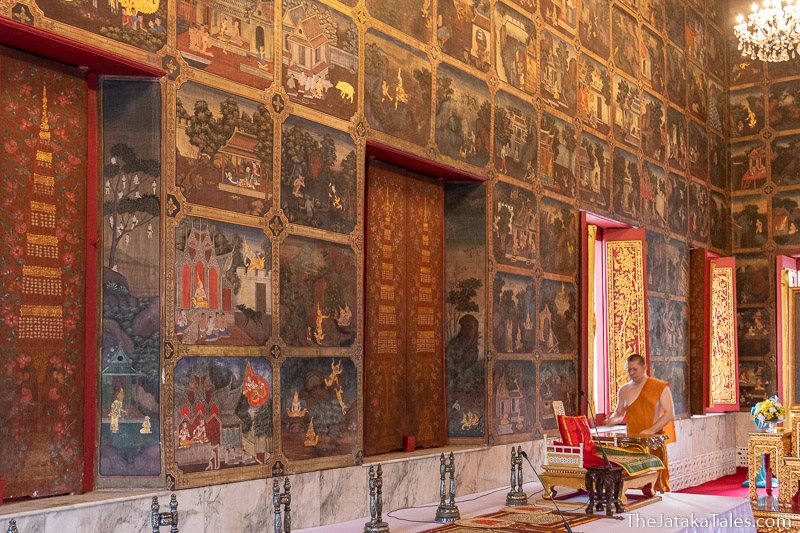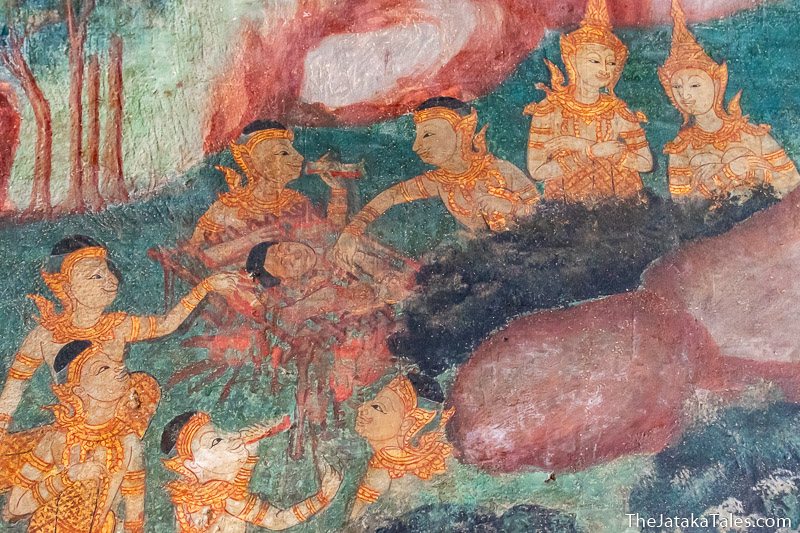
I did not write these stories for any religious or scholarly reasons. I’m not a Buddhist, an academic, or a storyteller; and I wasn’t seeking moral guidance. I just love Thai Buddhist art. The Jataka tales are a very important part of Buddhism in Thailand, where I live, and most temples here have mural paintings or other depictions of the last ten Jataka tales. So of course, I read them. I wanted to put a plot to the many iconic scenes (Temiya lifting the chariot over his head, the goddess rescuing Mahajanaka from the ocean, Jujaka sleeping safely in a tree while devas care for the children down below, etc.) that I saw so often. But it is quite rare for any of the other 537 Jataka tales to appear on temple walls, so I didn’t delve much further. But later, when I saw a painting of the Culla-Paduma Jataka (#193) (in which the Buddha-to-be eats his six sisters-in-law and is later rescued by a talking iguana after his wife tried to kill him because she fell in love with a thief who had no hands or feet) in the historic ubosot of Wat Thung Si Meuang in Ubon Ratchathani, I realized I should read all the others.
To my surprise, there was only one complete collection of the Jataka tales in English: The Jataka, or Stories of the Buddha’s Former Births, an academic book from the late 19th century. (There are other versions of some of the stories, but far from all.) While the stories were entertaining, as I knew they would be, some were a chore to read. The English is outdated (“and she besought him to forbear”1Jataka #102), they can be rambling and repetitive, and the translators contorted the gatha into into poems; mostly rhyming couplets such as these.
‘Tis hard to find such holy men, such brahmins, wise and good,
Who keep them spotless from all lust, that they may eat your food.2Jataka #495
—
One mortal dies—to kindred ties born is another straight:
Each creature’s bliss dependent is on ties associate.
The strong man therefore, skilled in sacred text,
Keen-contemplating this world and the next,
Knowing their nature, not by any grief,
However great, in mind and heart is vext.3Jataka #461
—
What time the nearness of a bosom friend
Threatens your peace to end,
If you are wise, guard your supremacy
Like the apple of your eye.
But when your bosom friend does more increase
The measure of your peace,
Let your friend’s life in everything right through
Be dear as yours to you.4Jataka #272
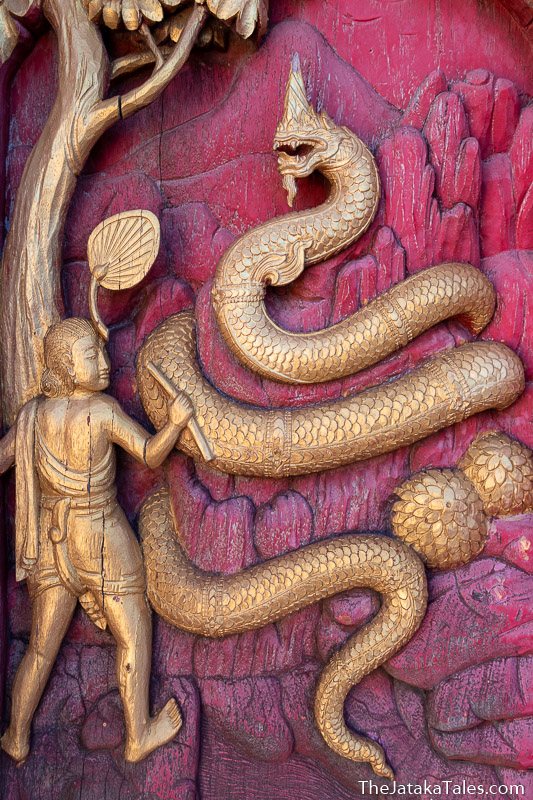
After reading twenty or so Jataka, I started searching the web again, hoping to find I was mistaken and there actually was another complete collection of Jataka tales in English: one that would be more enjoyable to read. There wasn’t. Then I thought . . . why not me? I had enough of a background in Buddhism and Buddhist folklore to understand the religious references in the stories, so I believed I could do a good job. This led to me undertaking a three-year mission that, even just a few days before I began it, I would never have imagined. The pleasure of reading the stories spurred me along throughout the endeavor, and knowing this had never been done before was quite motivational. While I often wondered whether I had made a mistake starting such a time-consuming project, I rarely regretted it.
My Approach
My only goal for these stories was to make them as easy and enjoyable to read as possible. Primarily this meant two things: using modern English and condensing them. The latter was necessary, and usually quite easy, since the stories are often rambling, with lots of irrelevant incidents, pointless repetition, and flowery language. People in the stories frequently think something and then say it out loud, or the narrator describes the exact same thing that a person says:
For fear of him, the hermit grew thin; he became squalid, lost his colour, grew yellower and yellower, and the veins stood out upon his skin.
It happened one day that he paid a visit to his brother. “Why, brother,” said he, “what makes you thin? how did you lose your colour? why are you so yellow, and why do your veins stand out like this upon your skin?”5Jataka #253
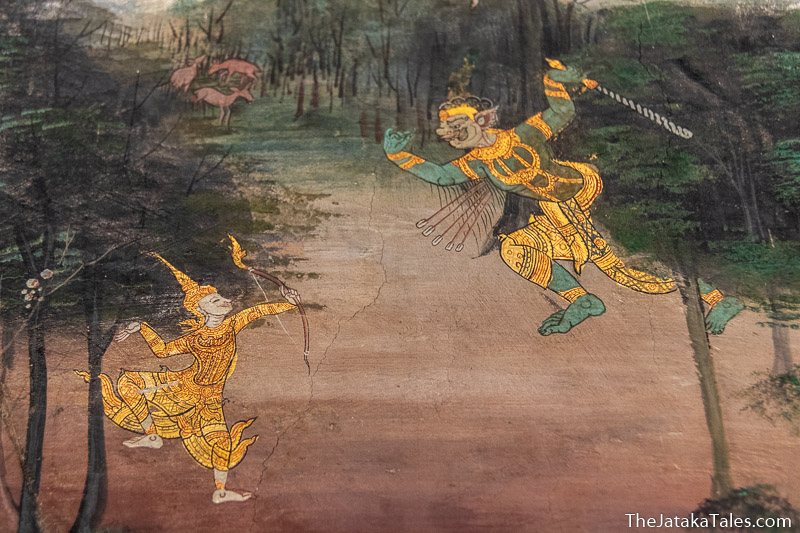
Even the original scholars translating the Jataka tales to English sometimes skipped parts of the ancient Pali versions: one footnote reads, “Some 15 stanzas are here omitted, as they only repeat what has been said before.”6Jataka #542 And as you would expect, the Buddha is frequently given excessive glorification. The original,
In stately dignity like Mount Sineru resting on the solid earth, the Master seated himself on the Buddha-seat, making a glory shine round him of paired garlands upon garlands of six-coloured light, which divided and divided into masses of the size of a platter, of the size of a canopy, and of the size of a tower, until, like shafts of lightning, the rays reached to the heavens above. It was even as when the sun rises, stirring the ocean to the depths.
With reverent obeisance and reverent hearts, the Brethren entered and took their seats around him, encompassing him as it were within an orange curtain. Then in tones as of Maha-Brahma the Master said . . .7Jataka #148
became simply “The Buddha preached . . .” in my version.
Also, with no scholarly or religious restrictions, I had the liberty to stray from the structure of the originals. Since they are irrelevant to the plot, I left out the introductory lines (e.g., “‘I saw one sitting,’ etc.—This story the Master told, whilst dwelling in Jetavana, about a certain landowner.”8Jataka #496) telling where the Buddha was when he recited the story and making a little catchphrase out of the first words of the gatha. Also I chose to tell the stories in two parts, rather than three, by combining both of the “present” (i.e., those from the Buddha’s era) sections into one. But despite being abridged, these versions are all still complete tellings. No significant parts of the stories were cut; only trifles and tangents.
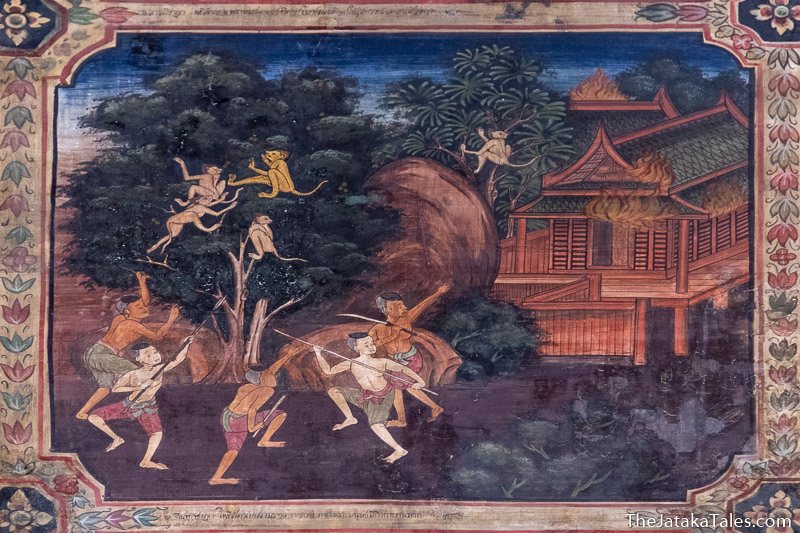
While condensing the stories often improved them, I resisted the urge to “fix” anything. The Jataka tales are entertaining, but as with many ancient fables, few stand as examples of good storycraft: Inconsistencies (in Jataka #54 we are told that eating a kimpakka fruit causes instant death, but the men who eat them do not even know they are poisonous until the Bodhisatta shows up later and tells them); contradictions (the present parts of both Jataka #272 and Jataka #481 tell the same story of a man who insults two of the Buddha’s top disciples and then tries to get them to return to his village: in the first he simply leaves the Buddha’s monastery disappointed, and in the second he’s struck dead and sent straight to hell); exaggerations (in Jataka #177 eighty thousand monkeys sit eating fruit in a single tree); and lapses in logic (in Jataka #22 a dog sneaks into the palace to save other dogs by telling the king that it’s impossible for dogs to sneak into the palace) are common.
To be clear, my intent in discussing the storytellers’ shortcomings is not to criticize—I wouldn’t have gone to all this effort if I didn’t love these stories—it is just to let readers know that these issues are not mistakes introduced during the abbreviation process; they lie in the originals. And also, when you wonder why in Jataka #220 the Bodhisatta did not just go live in another city instead of walking into the forest to kill himself, or how nobody had noticed the horse’s amazing superpowers in Jataka #254 before the Bodhisatta did; only the ancient storytellers know. All my versions of the Jataka tales remain fully faithful to the originals, problems and all.
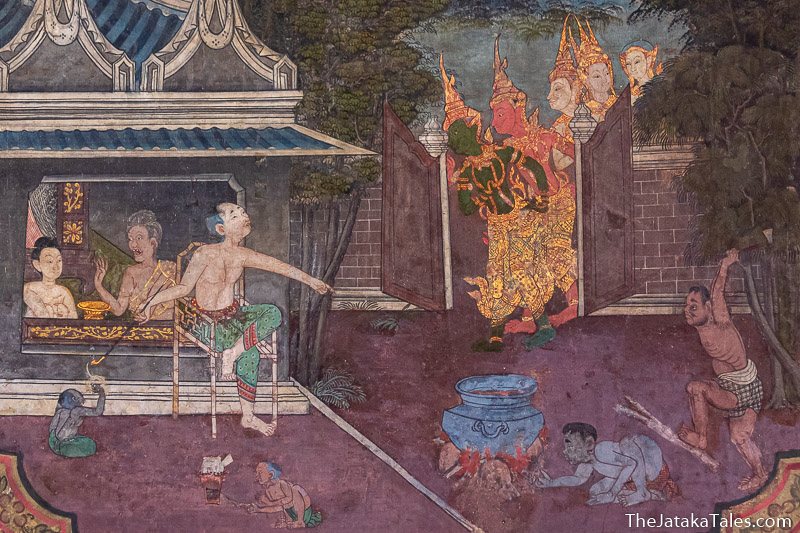
Finally, as mentioned in the About the Jataka page, there are many duplicate stories. Sometimes entire Jataka tales are identical to others, and sometimes just either the present story or the past story is repeated and joined to a different companion. In the ancient texts it is common to just write that things were the same as another and give a cross-reference (“This story was told by the Master while at the Bamboo-grove, about a traitorous Brother. The introductory incident is the same as that told in the Mahila-mukha-jataka.”9Jataka #141) I followed this method when the entire Jataka tale, both the past and present parts, is exactly the same or differs merely in peripheral details incidental to the plot, such as the brothers sticking around the palace to visit each other for a week in Jataka #8 and a month and a half in Jataka #462, and the pig having different names in Jataka #30 and Jataka #286. But, when only one part (either past or present) is the same, I wrote the stories out completely each time rather putting in links so there is no need to jump around to read a single Jataka tale.
Photos
The photos of the historic temple paintings that illustrate each Jataka tale are from Wat Kruawan Worawiharn in Bangkok and come from the commemorative book Literary Splendor from Nibata Jataka. They are used here by permission of the temple’s abbot. Because the temple does not have paintings for all 547 Jataka, some pictures are used for multiple Jataka. All other photos were taken by me.
Resources

My versions of the Jataka tales were adapted from the book The Jataka, or Stories of the Buddha’s Former Births (Cambridge University Press, 1895-1907) edited by E. B. Cowell, which is in the public domain. All quotes used when writing about the Jataka tales on the introductory pages also come from this book.
For Jataka #273, which Cowell published in Latin rather than English, I used an English translation attributed to Bhikkhu Sujato in the legacy version of SuttaCentral. Google translate and a Latin-English dictionary were enough to be able to read the short Latin passages included in a few other stories.
Some other resources I found particularly helpful for this project were the Dictionary of Pali Proper Names, Wisdom Library, and Access to Insight.
Further Reading
For in-depth background on the Jataka tales, Jataka Stories in Theravada Buddhism: Narrating the Bodhisatta Path (Routledge, 2016) by Naomi Appleton is excellent.
To read some non-abridged translations of Jatakas in modern English rather than the antiquated Cowell versions find The Jatakas: Birth Stories of the Bodhisatta (Penguin, 2007) by Sarah Shaw and The Ten Great Birth Stories of the Buddha: The Mahanipata of the Jatakatthavanonoana (Silkworm Books, 2016) by Naomi Appleton and Sarah Shaw.
Copyright Notice
All text on this website is my (Tim Bewer) original work and my not be used in any form without permission. That said, if you ask me I may say yes. As mentioned above, the photos are a mix of mine and others; none may be used without permission.
